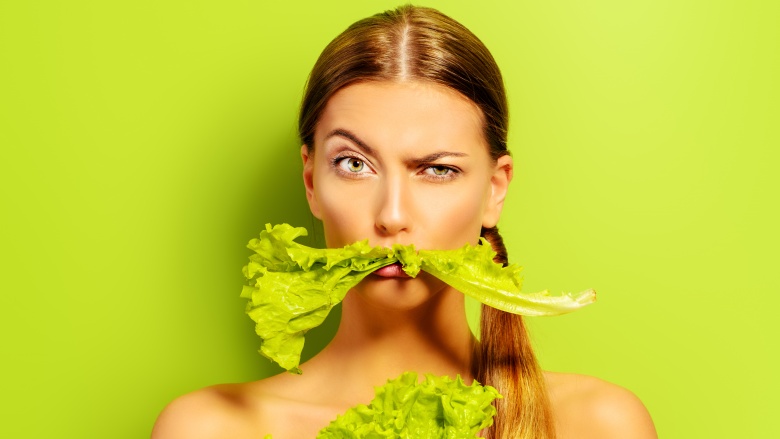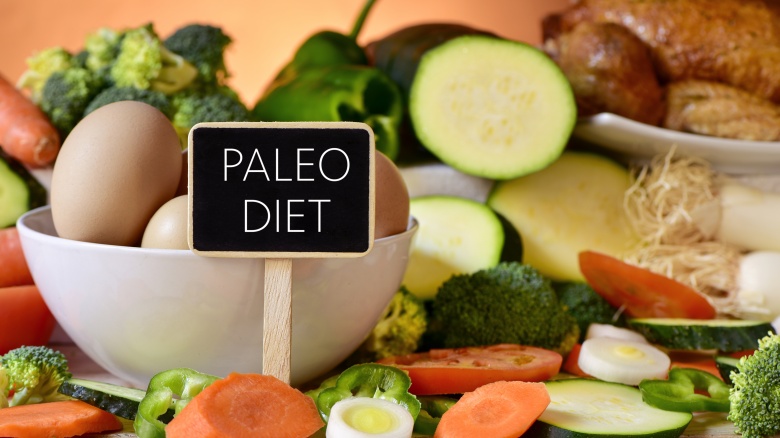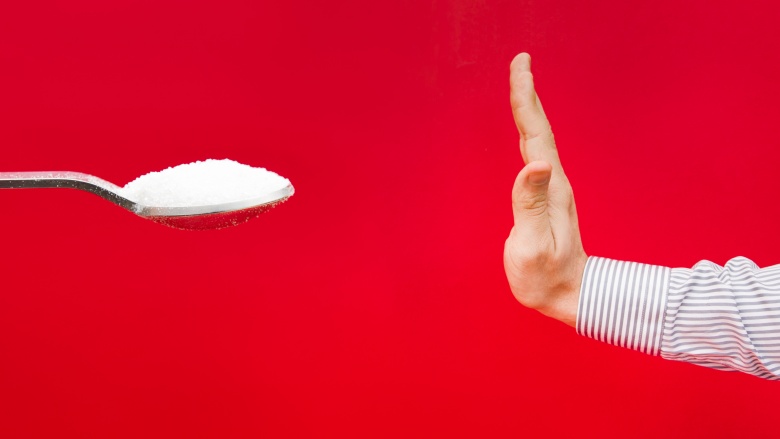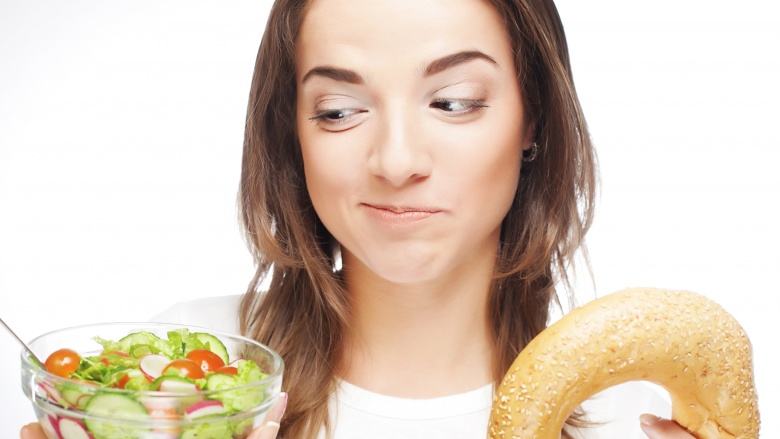What Happens To Your Body On The Whole 30
"I just want a brownie!" I yelled in the middle of the crowded grocery store. My husband shot me a look, and even I was surprised by my outburst. There I was holding an armful of apples, sweet potatoes, and almonds. I wanted sugar, and I wanted it bad. It was only day two of the Whole 30, and already I was tired, irritable, and contemplating quitting.
There are plenty of reasons to make a dramatic diet change like the Whole 30. Some people crave the structure of a cleanse or program. Others like that sense of community. If I'm suffering, I want everyone around me to be unhappy as well. For me, the promise of improved health was exciting.
What is the Whole 30?
The Whole 30 was created in 2009 by licensed nutritionists Dallas and Melissa Hartwig. It is meant to be a "short-term nutritional reset." It basically recommends cutting out inflammatory foods, such as sugar, grains, dairy, and legumes for 30 days. Dallas and Melissa believe it is essential to completely remove all of these foods from your system, then add them back one by one to determine if you have any sensitivities to them.
Can't get a handle on your psoriasis? Maybe you're sensitive to soy. Chronic migraines ruling your life? Gluten could be the culprit. And if you're like me and suffer from constant allergies and sinus infections, maybe dairy is actually not doing a body good.
When I had to fill my third Amoxicillin prescription in a year, I knew I was ready to make big changes to avoid these sinus infections. Among just about every chronic health condition, the Whole 30 states it improves seasonal allergies and respiratory issues. So I kissed pizza and sugar goodbye and set out on this new adventure.
Isn't that just paleo?
While the Whole 30 has a lot of similarities with the Paleo Diet, there are a few key differences. For one thing, the Whole 30 is meant to be temporary, where many paleo dieters plan to eat that way for the rest of their lives. Paleo also focuses on whole, minimally-processed foods. However, there are many paleo versions of "off-limits" foods, such as paleo bread or paleo pancakes. These treats are not allowed on the Whole 30. This is because the Whole 30 is meant to not only rid your body of these inflammatory foods, but also break any unhealthy relationship you may have with these deliciously evil foods.
Why try it?
If you have any chronic health condition or just simply feel too dependent on certain types of food, the Whole 30 may be worth a try. The Whole 30 encourages you to "cut out all the psychologically unhealthy, hormone-unbalancing, gut-disrupting, inflammatory food groups for a full 30 days," says the Whole 30 website. "Let your body heal and recover from whatever effects those foods may be causing. Push the 'reset' button with your metabolism, systemic inflammation, and the downstream effects of the food choices you've been making."
When I started the Whole 30, I was hoping to avoid sinus infections and maybe lose a few pounds. What I didn't expect was to confront a full-on sugar addiction. I knew I loved sweets but soon realized I needed something sweet throughout the day, including after lunch, dinner, and any time I sat down to write! Prior to cutting it out, I never realized how dependent I was on it.
What are the benefits?
The benefits of the Whole 30 are tricky to determine because it seems the results are so individualized. Of course the Whole 30 website is filled with testimonials praising the program for everything from losing weight to curing diabetes. Participants have reported clearer skin, improved energy, and lower blood pressure.
While we were not able to locate any independent studies on the Whole 30 itself, cutting out processed food will of course have you feeling better. Eliminating all sources of added sugar may be the hardest thing you ever do, but it will help you drop weight and increase energy. Oh, and it will probably help you live longer. After the first week of exhaustion and some unexpected mood swings, I was amazed at the constant level of energy I had during the day. I was used to jumping from sugar high to sugar high, so being able to avoid that afternoon slump felt amazing.
What are the drawbacks?
The biggest drawback to the Whole 30 is the exact reason it is so popular. It is just so very extreme. Judging from its testimonials, Whole 30 participants love the no-nonsense structure and tough love the program offers. However, this kind of restricted diet is certainly not sustainable in the long run.
For example, if you slip up, the creators state that you must completely start the program over. The Hartwigs believe you will not see the full results unless you completely go without any inflammatory foods for 30 days. Snuck a bite of cheese on day 28? Back of the line; tomorrow is day one for you. Nutritionist Keri Glassman worries that part of the plan is unrealistic. "I like people to be strict for four to seven days to give them a jump-start and reset the behaviors," she tells Elle. "But 30 days is a long time and can be very restrictive, especially if you have to start over."
It's also difficult to continue making meals with nothing but meat and vegetables for 30 days. Dr. David L. Katz spoke with Business Insider about the restrictive nature of the program. "The grouping [of banned foods] is both random and rather bizarre from a nutrition perspective," he says. "If the idea is good nutrition, cutting out whole grains and legumes is at odds with a boatload of evidence."
Is it worth it?
While it definitely has its drawbacks, I am glad I completed the Whole 30. I'm also glad it's over! The Whole 30 does a fantastic job of providing the resources and community to support you during this journey. Their social media following is insane, and they certainly take food porn to a new level with their hashtag #whole30recipes.
As for my results, I accomplished what I set out to do. I went an entire month with absolutely no allergy or sinus symptoms. My clothes are looser now. Most importantly, I feel like I have truly transformed my relationship with food. I no longer see it as a comfort or a reward for a hard day. I find myself turning down cake with little to no effort. That being said, I still like having the option and probably won't be completing another round for quite some time.






